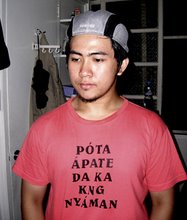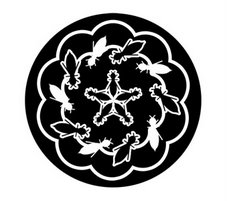ANIMAX is holding the 2007 Animax Awards Pan-Asia Competition. People who wish to have their dream story animated are invited to join (the deadline is today, hehe). There is the regional level, the victor of which will proceed to the Finals.
And as I said, the winner's work will be turned into one anime episode! Anime/manga, I believe, is one industry that keeps Japan's sense of cultural identity alive. I wish each ethnic group in the Philippines would start their own, even just the comics (manga).
This is the anime story -- inspired by Kapampangan mythology and culture and my sociological imagination -- that I submitted. It was sort of rushed (done non-continuously within three weeks), but behold anyway.
Kálam
Wield the Blessing
In the land of Kapangpangan (the Great Riverbank), the legendary brothers Lord Sinukuan and Lord Namalyari—the two mountain gods that represent the Sun and the Moon—have provided the natives Nature’s gifts and wisdom for them to thrive. As centuries went by, man has grown impatient with Nature’s ways and sought for life where he was in control.
Such motivation gave birth to urbanization, slowly transforming the vibrant lands around it into manmade cities where people depended heavily on money, causing people to turn greedy, destructive, and selfish. For life in the city seemed deceptively more convenient to most rural folks, they began abandoning their ethnicities and cultural heritage to try their luck living in Clarkfield, the capital city.
Bothered, the two legendary lords argued. The wizened Lord Sinukuan wanted the destruction of all the cities, for it was the only sure way to protect Nature and man from being devastated. Lord Namalyari, secretly jealous of his brother’s power over daylight, preferred to support man’s actions.
Finding themselves in disagreement, they went in separate ways and searched for people whom they could grant their power-enhancing kálam (gift) to deliver their respective causes.
Lord Sinukuan sent his daughters into the city to seek for innocently oppressed and dissatisfied people, who were formerly living in the rural parts of the land.
In the biggest shopping mall of the capital, they encounter Jester, the vain and comic caretaker of a toy store, who was often scolded by his employer. A messenger shares to him the mission and remind him of his past—that as a boy, his community was driven away from its original habitat at the foot of an inactive volcano due to new laws and were relocated into the southern plains where they were heavily taxed by the government for the construction of their new village.
Financially insufficient, Jester fled to Clarkfield in hopes of acquiring wealth to someday uproot his family from such condition. However, city life was harsher than how he expected it to be, making Jester trapped in working for a demanding yet low-paying employer.
Jester finally accepts the mission. He was granted Lord Sinukuan’s kálam, inscribing in Jester’s back the codename Timáua (written in ancient Philippine script baybayin), or “free man.” Bearing the mission of destroying urbanization’s oppressive atrocities and liberating the people from social injustice, he acquires the strength and traits of the volcano.
Now he must face not only the most powerful man in the city, but also those who received Lord Namalyari’s kálam.
Alben meng manyaman, boy!
Subscribe to:
Post Comments (Atom)








1 comment:
I am very much interested about the kulitan or baybayin. if you could give me some referrences on its history and use, i would very much appreciate it. my email is il_saints@yahoo.com
thanks and regards,
ivan
Post a Comment